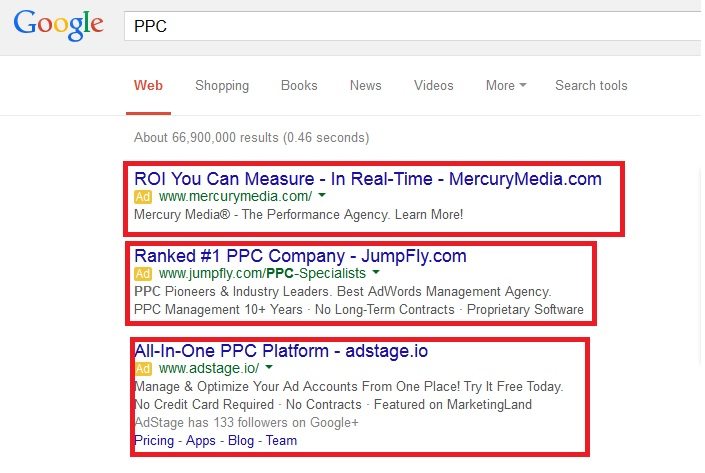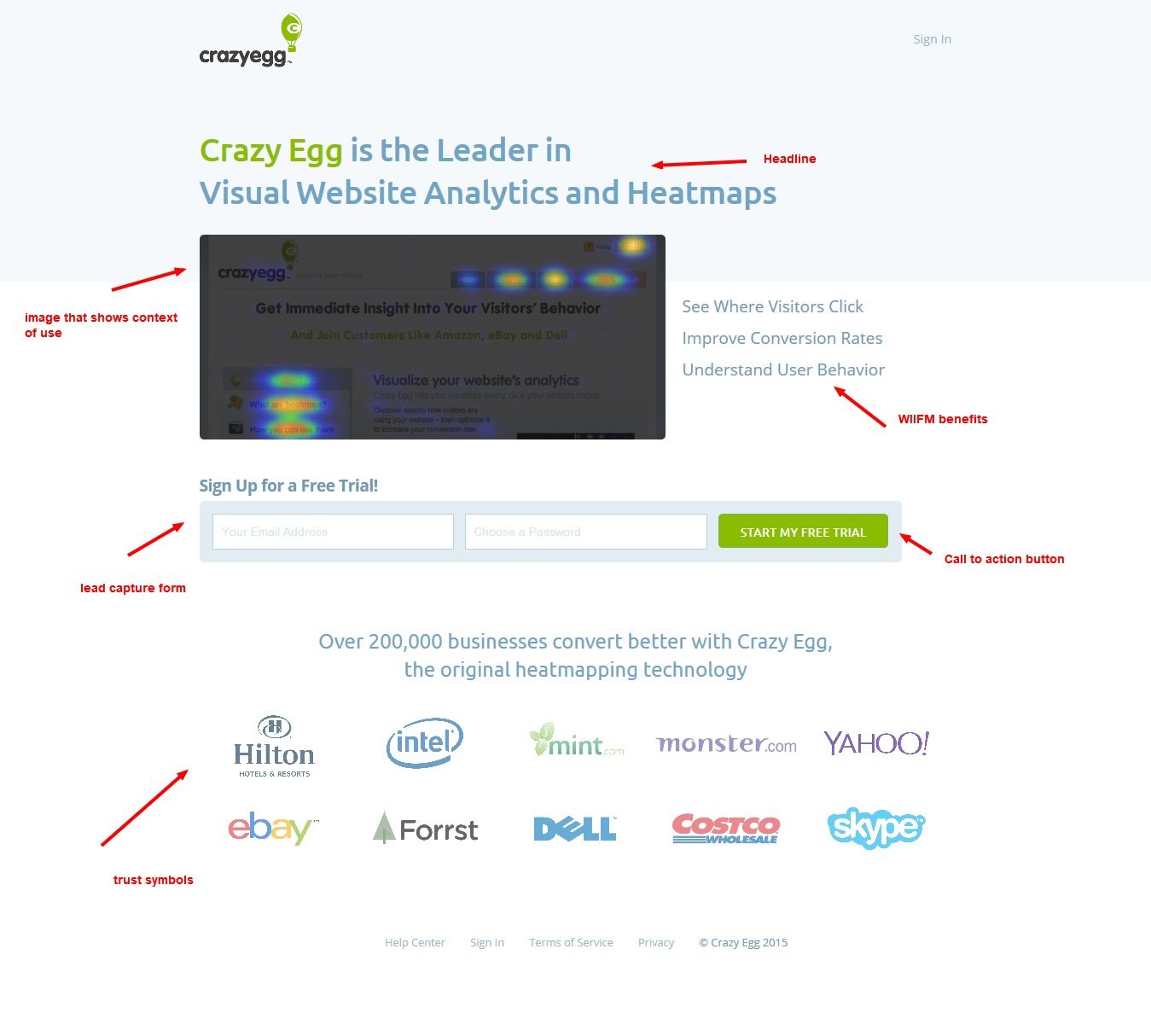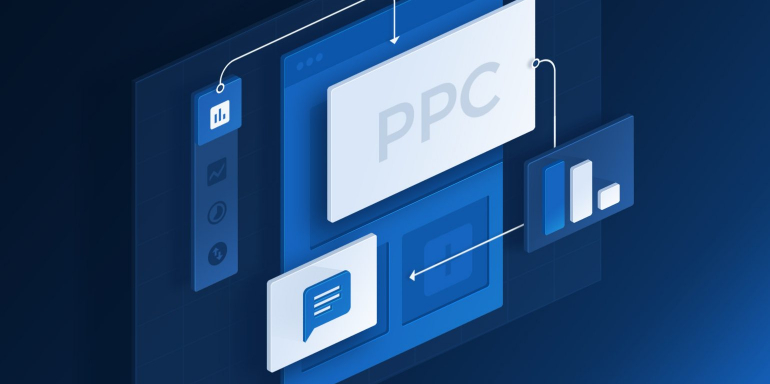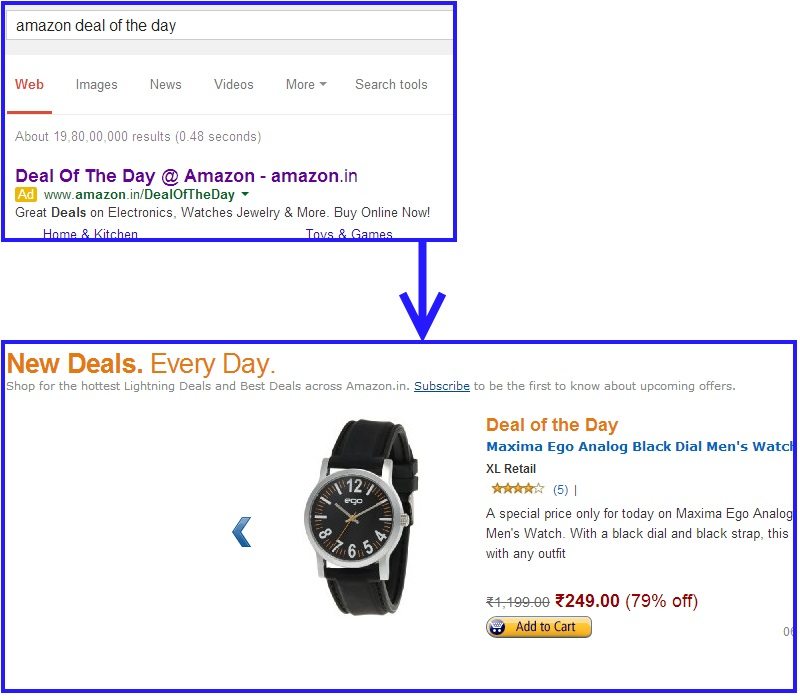“Half the money I spend on advertising is wasted; the trouble is I don’t know which half.” (John Wanamaker)
Poor Mr. Wanamaker. If PPC advertisements existed in the 1920s, he could have easily measured which half he was losing.
So what is PPC?
PPC stands for pay-per-click, and according to Wikipedia it is “the amount spent to get an advertisement clicked.”
PPC is an internet marketing model where advertisers pay a specific fee every time a user clicks on their ad. So, instead of relying on organic traffic to your website, you buy traffic for your page by paying a publisher, like Google, to show your ad when your visitor does a search for your relevant keyword(s).
Learning the ins and outs of PPC campaigns will make you a more effective marketer, whether or not you’re the one running the ads, because it will make you an expert in creating hyper-specific post-click landing pages focused on message matching, employing best practices, and testing everything.
Sound good? Let’s dive right in.
What are PPC advertisements?
Pay Per Click is an internet marketing model where advertisers pay a specific fee every time a user clicks on their ad. So, instead of relying on organic traffic to your website, you buy traffic for your page by paying a publisher, like Google, to show your ad when your visitor does a search for your relevant keyword(s).
These are three PPC ad results that Google generated when I searched for the keyword “PPC.”

If you want to get the most out of your PPC ads, your ad should always lead your visitor to an optimized post-click landing page – and not your cluttered homepage. The entire purpose of your ad is to get a user to a PPC post-click landing page so you can get a visitor to take an action, click on the CTA button, and become a customer.
You need to align your post-click landing page with your PPC ad perfectly to fulfill this purpose.
Before we dive into how to set up PPC post-click landing page campaigns, it is important that you understand why you need a PPC strategy in the first place.
The importance of paid traffic
Paid traffic is different from organic search or referral traffic. Organic traffic is automatically assumed by most people to be more important than paid traffic. Where paid ads are direct about selling you on something, organic search results use a more subtle strategy to make the sale.
And this subtle approach is the best way, right? As a long-term strategy for most companies, yes. Organic traffic is more valuable over time, because you build a foundation of trust (and you know, you don’t have to pay for it).
However, does this mean paid ads are bad?
Not at all. In fact 45.5% of visitors cannot identify the difference between a paid ad and an organic search result. Additionally, users who arrive at your page after clicking a paid ad are 50% more likely to click on your CTA button.
The data is there. Paid ads are not only important, but they have a better chance of converting.
Over 60% of users with the intent of purchasing a product click on PPC ads, even when presented with a wide array of organic search results. For these users, the search results related to PPC ultimately prove the most relevant. (Zero Gravity Marketing)
However, that stat is only relevant if you are directing your PPC visitors to a targeted post-click landing page instead of your homepage. Remember, paid users (or PPC visitors) are different from organic traffic visitors. While an organic visitor is on the hunt for more information, a PPC visitor needs to make a purchase soon.
This is why your PPC ad should lead them right to your post-click landing page, where you can offer them the exact thing they were looking for. If you send your paid users to a homepage, they have to sift through all of your copy and navigation links to find what they wanted (and assumed they would be taken straight to).
You can see here that it isn’t just a well-written PPC ad that gets a user to convert. There are two clear parts to a successful PPC campaign. If you want your PPC users to convert into paying customers (and since they are expensive, I assume you do), you need to have both halves of the PPC puzzle. One is your relevant, keyword-specific ad and the other is your optimized post-click landing page.
In order to create a post-click landing page that supports your PPC efforts, you need a quick background in message matching and conversion ratios.
Message Matching
Without message matching your PPC ads will not yield any conversions. It’s really as simple as that, and here’s why. Message matching or ad matching is when you align your ad headline and your post-click landing page perfectly.
Here’s what message matching looks like in action:
The headline of the ad says “Deal of the Day @ Amazon” and the post-click landing page you arrive on when you click the ad has this headline, “New Deals. Every Day.”
A good message match assures the visitor they have arrived on the right page. This is important to avoid confusion, which can happen if a user goes from an ad specific to something they want to a homepage they have to attempt to navigate. Don’t make it any harder than you have to for your user to find what you’re selling!
Conversion Ratio
No need to dust off your mathematics books for this one. Conversion ratio is a very simple, yet highly underused post-click landing page practice. Conversion ratio is the ratio of clickable elements on your post-click landing page to the number of your page goals.
A good post-click landing page (almost always) has one, single goal. Any clickable element distracting your visitors from your call to action is a distraction. Toss it.
Your conversion ratio should always be 1:1 on your PPC post-click landing pages. Don’t give your paid visitors a chance to navigate away from your page. Encourage them to stay by keeping this 1:1 ratio intact.
Now that we have a solid starting point, let’s move on to the anatomy of a PPC post-click landing page.
Anatomy of an optimized PPC post-click landing page
There are certain elements a good PPC post-click landing page should always have.
Your PPC post-click landing page should contain:
- An impactful headline
- A supportive tagline
- A list of benefits (not just features)
- Trust symbols
- A clear call to action
- A lead capture form
- An image showing context of use or a graphic that appeals to the visitors’ emotional side
It sounds like a lot, but when you see it in action, you’ll find it’s simpler than you might anticipate. Let’s analyze a PPC post-click landing page to see how these elements come into play on an actual page.
This is Crazy Egg’s PPC post-click landing page. The page has message matching, the right keyword “heatmap” in its PPC ad, and a great post-click landing page headline:

Here’s the post-click landing page:

The page has all of the necessary elements to be a high-converting machine. However, the page has a number of navigation links, and even though they are at the bottom of the page, they do still make the conversion ratio 5:1, which they should test to see what the effect is on their conversion rate.
Ready to give this a shot?
Action Steps:
- Identify the keywords your first campaign will focus around
- Write three versions of your ad headline and PPC post-click landing page headline to practice message matching
- Assemble the other elements you’ll need, and test your first page using Instapage
Sign up for an Instapage Enterprise demo today.

See the Instapage Enterprise Plan in Action.
Demo includes AdMap™, Personalization, AMP,
Global Blocks, heatmaps & more.

